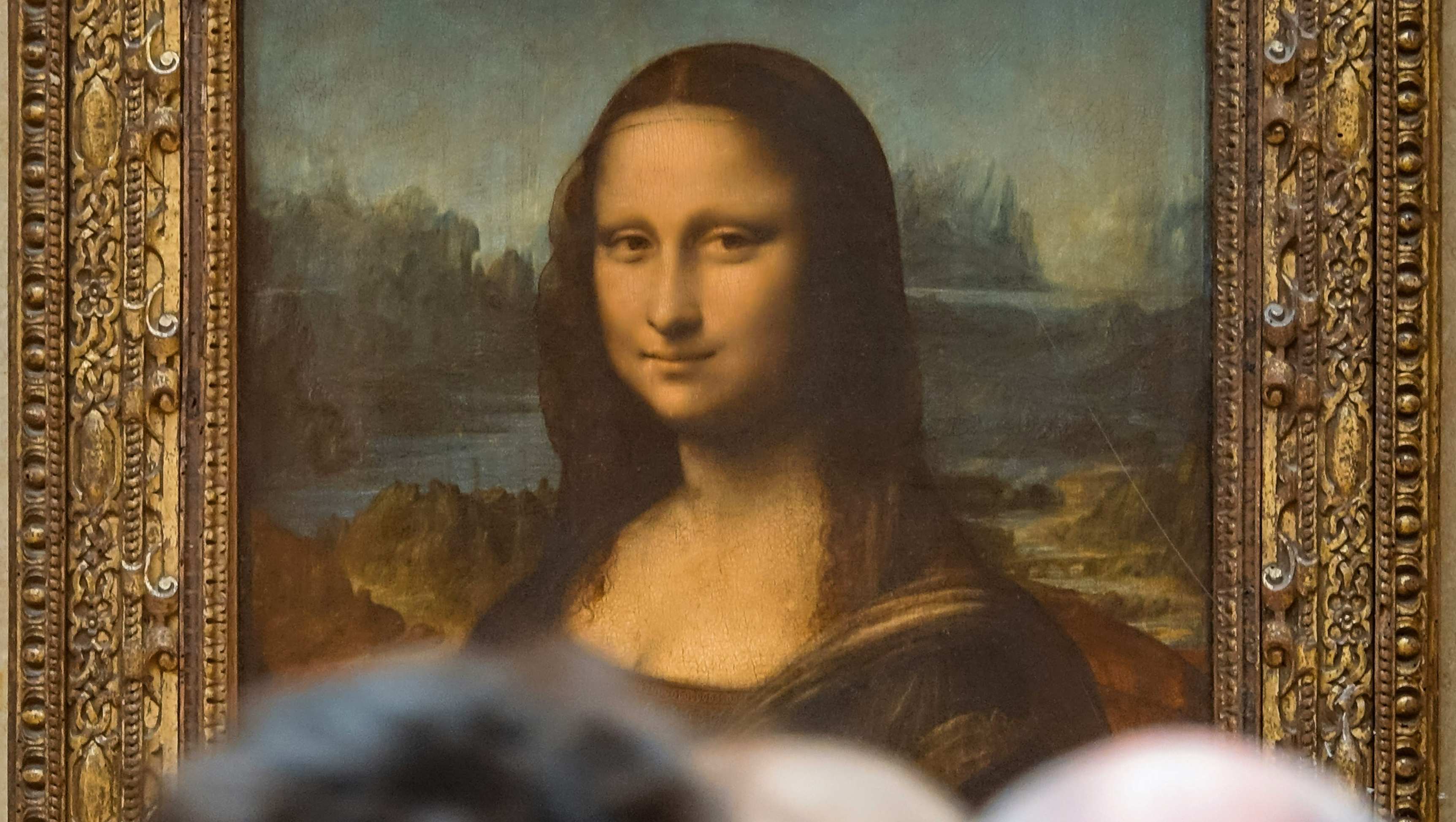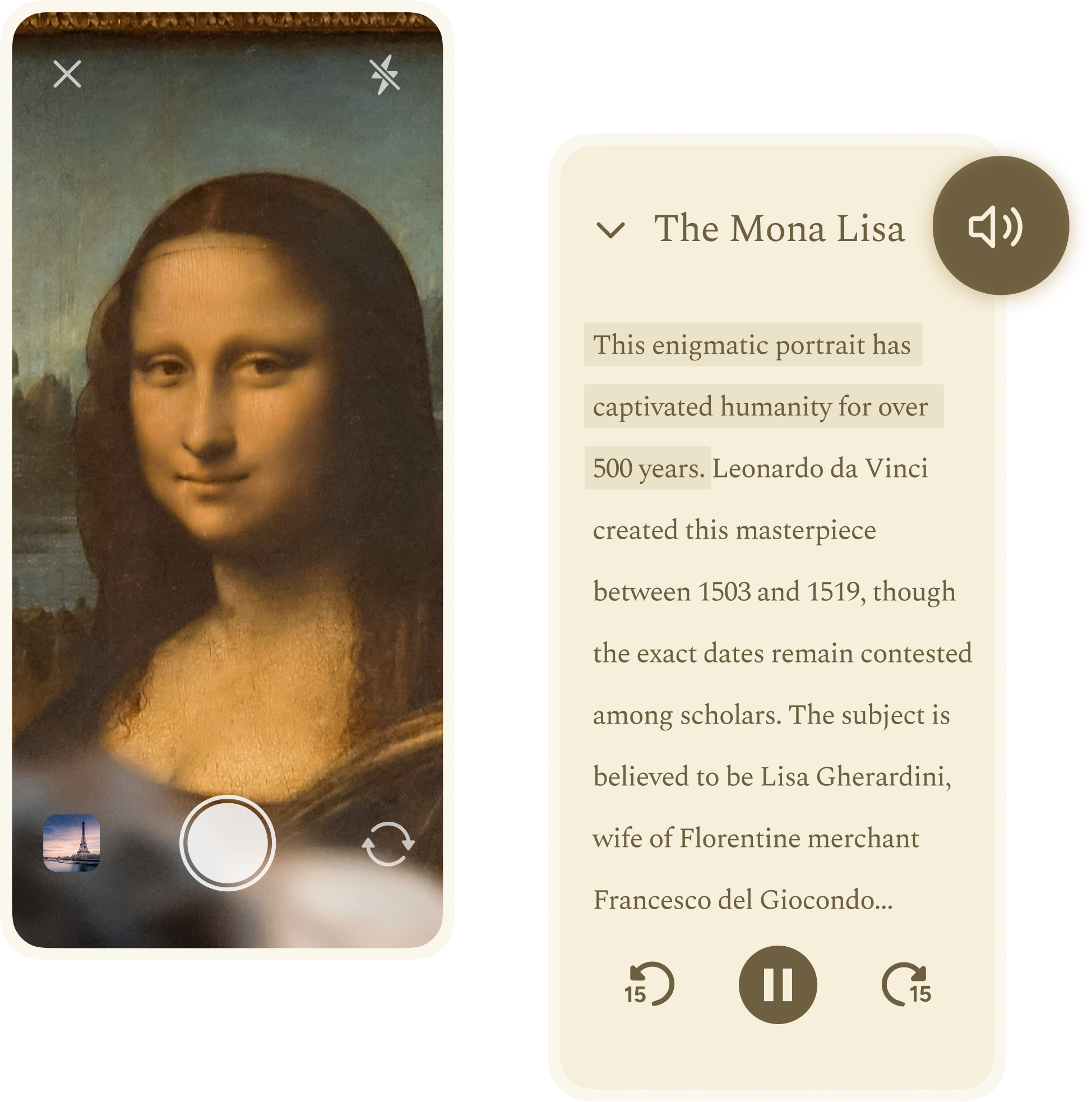The Meaning Behind the Mona Lisa
Decoding the Mona Lisa: The Hidden Meanings Behind Leonardo da Vinci's Masterpiece

In a room of the Louvre Museum in Paris, behind bulletproof glass and a wooden railing, hangs a rather small painting of a woman. Each day, thousands of visitors crowd before it, many holding phones above their heads to capture an image they could easily find online. The painting is the Mona Lisa.
The Mona Lisa measures just 30 by 21 inches, smaller than many television screens. Yet in this modest space, Leonardo da Vinci created something that has held the world's attention for over five centuries. What makes this particular arrangement of pigments on wood so captivating? The answer lies not in one element but in several working in harmony, like a well-tuned instrument.
The Woman Behind the Smile
Most scholars now believe the woman in the painting is Lisa Gherardini, wife of a Florentine cloth merchant named Francesco del Giocondo. In Italy, they call the painting "La Gioconda" after her married name. Leonardo began painting her around 1503 and, being the perfectionist he was, continued working on it for years.
This fact alone sets the painting apart. Unlike most portrait commissions of the time, Leonardo kept this one with him until his death, tinkering and refining. He traveled with it to France, where King Francis I eventually purchased it. Leonardo's reluctance to part with the painting suggests he saw in it something beyond a simple commissioned portrait. It had become his ongoing experiment, a proving ground for his theories about light, perception, and human expression.
Leonardo deliberately chose not to paint the rich jewelry and elaborate clothing typical in commissioned portraits of wealthy patrons. Instead, he depicted his subject in relatively modest attire with a simple veil and no ostentatious displays of wealth. This suggests Leonardo was less interested in showcasing social status and more focused on capturing human essence, a distinctly humanist approach reflecting Renaissance values about the importance of the individual.
The Revolutionary Technique
To understand the Mona Lisa's significance, we must first appreciate Leonardo's groundbreaking technique. Created between 1503 and 1519, the portrait showcases his mastery of sfumato, a painting technique where colors blend without distinct lines, creating a soft, hazy effect that feels almost three-dimensional.
This was revolutionary for its time. Unlike his contemporaries who created sharp contours between elements, Leonardo layered extremely thin coats of paint (sometimes more than 30) to create transitions so subtle they're nearly imperceptible to the naked eye. Scientific analysis has revealed that some layers are less than 40 micrometers thick, thinner than a human hair.
The result is a figure that seems to shift and change depending on the viewer's perspective, contributing to that famous impression that her expression transforms as you look at her. This wasn't merely aesthetic; it reflected Leonardo's understanding of human vision and perception, demonstrating how he merged art and science.
The Symbolic Landscape
While most viewers focus on the subject's face, the background contains rich symbolism often overlooked. The winding road behind her left shoulder suggests life's journey, while the bridge in the distance may symbolize connection between different states of being.
The contrasting landscapes on either side of the figure, one civilized with a bridge and road, the other wilder and more primordial, create a visual tension that some scholars interpret as representing the dual nature of humanity: civilization versus nature, rational versus emotional.
Art historians have noted that the landscape doesn't correspond to any specific location in Italy. Instead, it appears to be an idealized, imaginary scene, perhaps representing Leonardo's interest in the macrocosm (the universe) as it relates to the microcosm (the human).
The horizon line doesn't match on the left and right sides of the painting, a deliberate choice by Leonardo that creates subtle visual tension. This asymmetry keeps the viewer's eye moving across the painting rather than settling on any single point.
The Mathematics of Beauty
Leonardo, ever the mathematician, embedded sophisticated proportional relationships throughout the work. The figure is arranged in a triangular composition, creating stability while the spiraling elements of her hair and clothing introduce dynamic movement.
The golden ratio (approximately 1:1.618), which appears repeatedly in nature and was highly valued during the Renaissance as a divine proportion, can be found multiple times in the painting's composition. The relationship between her head, shoulders, and hands all reflect this mathematical harmony.
This mathematical precision wasn't merely decorative. It reflected Renaissance Neo-Platonic beliefs about universal harmony and the divine order underlying all creation. By incorporating these proportions, Leonardo was suggesting a cosmic significance to human existence.
The Famous Smile
Perhaps no aspect of the painting has generated more discussion than the subject's smile. Its ambiguity creates an immediate psychological engagement with viewers.
The smile's elusiveness isn't accidental. Leonardo deliberately employed his sfumato technique around the corners of the mouth and eyes, areas that signal emotional expression. By keeping these areas slightly blurred, he created a facial expression that seems to shift depending on where exactly the viewer focuses and the angle of viewing.
Leonardo understood that direct vision (central focus) processes detail and color, while peripheral vision better detects shadows. By placing the curve of the smile in an area that transitions between direct and peripheral vision, he created an expression that seems to change as our eyes move across the face.
Modern neuroscientists have confirmed that different neural mechanisms process central and peripheral vision, suggesting Leonardo intuitively understood aspects of human visual perception centuries before they were scientifically explained.
Reflections of Leonardo Himself
Many art historians believe the Mona Lisa contains elements of Leonardo's own identity. X-ray analyses have revealed that certain features match those in Leonardo's self-portraits. Some scholars suggest the painting may represent a feminine version of himself or a merger of male and female principles, reflecting Renaissance Neo-Platonic ideas about the unified self.
Leonardo kept the painting with him until his death rather than delivering it to its commissioner, suggesting a personal attachment beyond a typical portrait commission. It became one of his most experimental canvases, where he continuously refined and reworked his techniques over many years.
Historical Context and Meaning
The Mona Lisa was created during a period of extraordinary intellectual and artistic flowering in Italy. The Renaissance emphasis on humanism — placing humans at the center of intellectual inquiry — transformed how people thought about themselves and their relationship to the divine.
Leonardo's portrait captures this philosophical shift. Rather than focusing primarily on religious symbolism, as medieval art had done, the Mona Lisa presents human consciousness itself as worthy of profound contemplation. The subject's knowing expression suggests an inner life, an individuality and psychological depth that reflected new Renaissance conceptions of personhood.
The painting also emerged at a time when Leonardo was deeply engaged in scientific studies of human anatomy, light, geology, and botany. These investigations informed every aspect of the portrait, from the accurate depiction of musculature around the eyes and mouth to the atmospheric perspective in the landscape.
The Truth That Emerged Later
For the last 500 years, the Mona Lisa was admired in artistic circles but was not the global icon it is today. So what changed? How did this particular painting become so famous?
In 1911, a routine employee named Vincenzo Peruggia hid in a closet until the museum closed, then simply removed the painting from the wall, tucked it under his coat, and walked out. The theft created international headlines. When recovered and returned to the museum in 1914, it had transformed from an important Renaissance painting to a global cultural phenomenon.
Today, protected behind bulletproof glass and special lighting, the Mona Lisa represents far more than just artistic achievement. It has become a symbol of artistic genius itself, a required cultural pilgrimage for visitors to Paris, and a shorthand for mysterious beauty in global popular culture.
Want to learn more about the Mona Lisa, or any other works of art? Download Guide for an immersive audio tour.
